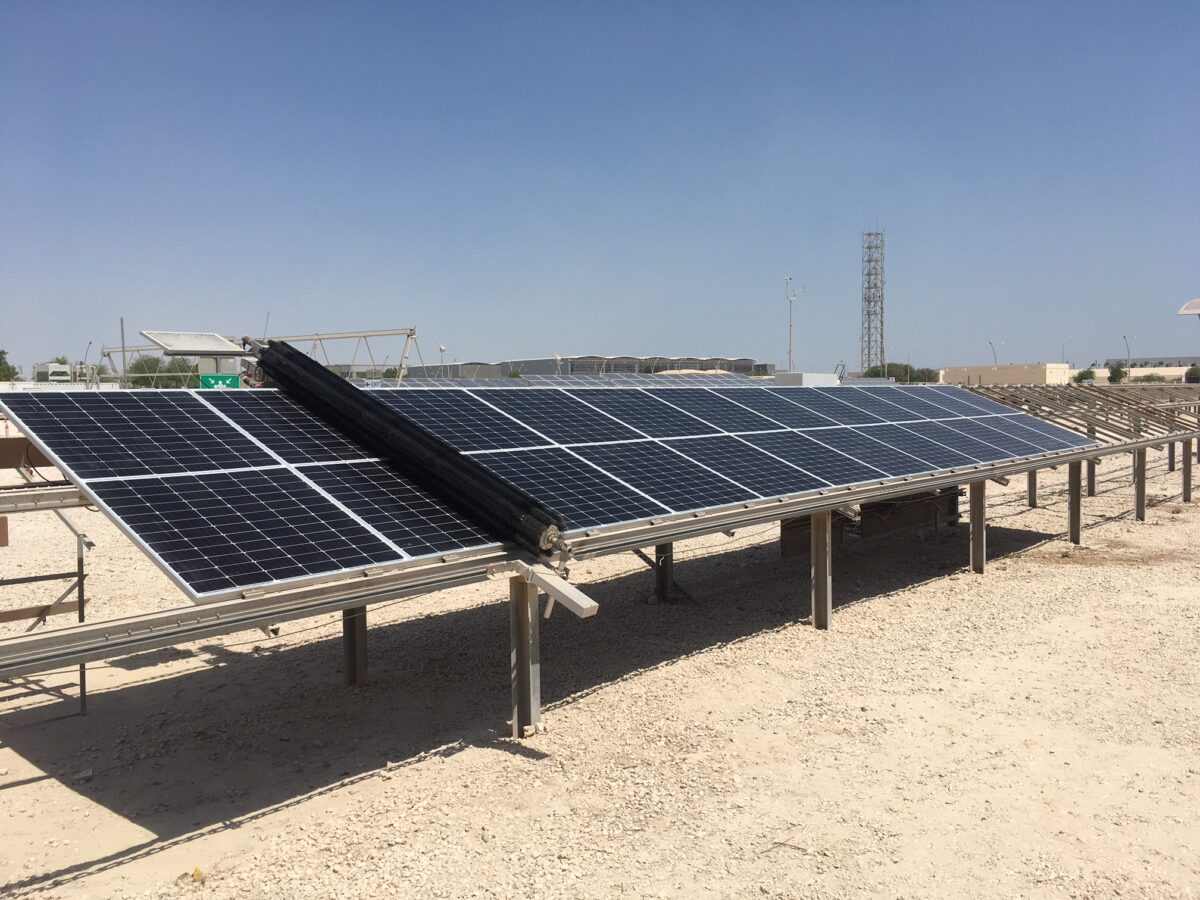From pv magazine Global
Scientists at the Qatar Environment and Energy Research Institute (QEERI), part of Hamad Bin Khalifa University (HBKU), have investigated the impact of the shadow produced by moving cleaning robots on the performance and yield of utility scale photovoltaic plants.
“Cleaning robots are now being used at almost all desert PV plants and, usually, they run during the daytime, which creates a moving shadow on the PV modules,” the research’s corresponding author, Benjamin Figgis, told pv magazine. “We did a field study in Qatar to measure how a robot’s shadow affects the PV output in real time, and to see if hot spots were created.”
The scientists conducted a series of tests under clear sky conditions using the commercial robot Nomadd Desert Solar Solutions on different PV array configurations at the QEERI testing facility in Doha, Qatar, with a tilt angle of 22 degrees. They considered three main factors: module design, module orientation, and robot speed.
They specified that the DC current and voltage of the PV string were recorded at 4 Hz, from several minutes before the robot pass to several minutes. The current was measured by passing the string DC cable through a 10 A/75 mV shunt resistor and sensing the voltage drop with the same datalogger. String DC power (P) was obtained by multiplying the voltage and current values.
They explained that the speed of response of the inverter is a main critical factor, as the robot moves quickly over the modules. They also noted that the robot takes the same time to traverse the string regardless of the module type or orientation.
Through their analysis, the academics found that module orientation has an enormous effect on the impact of shadow.
“In landscape, the string current and power dropped severely as the robot passed, whereas strings with portrait modules were barely affected,” Figgis stated. “This was well explained by the layout of modules’ bypass diodes. Happily, there were no signs of cell hot spots, although bypass diodes did heat up if the robot stopped for some time.”
Figgs also explained that, notably, the inverter’s maximum power point tracker (MPPT) algorithm struggled to cope with the robot’s moving shadow – sometimes it increased the string voltage, sometimes it lowered it, and it took around a minute to re-establish MPP after the robot left the array. “For the set-up we tested, one robot pass reduced the day’s PV energy yield by around 0.16% for landscape modules. With portrait modules the loss was nearly zero,” he further explained.
The researchers also found that the decrease in power was larger for full-cell modules than half-cut panels, and that the heating of a module’s bypass diode occurred if the robot stopped on the module, but not while the robot was moving.
“The key lessons were that if a PV plant is being designed with cleaning robots in mind, their shading losses can be minimized by portrait module layout, which is usually the case for single-axis trackers,” Figgs concluded. “For landscape systems, it is best to run robots at night, although before dew has formed.”
The research’s findings can be found in the study “Effect of cleaning robot’s moving shadow on PV string,” published in Solar Energy.
The same group published in January a study providing an assessment of the degree to which cleaning robots could threaten the physical integrity of solar panels. They found that cleaning machines have a very minimal impact and that modules of similar sizes tend to exhibit roughly the same amount of vibration.
This content is protected by copyright and may not be reused. If you want to cooperate with us and would like to reuse some of our content, please contact: editors@pv-magazine.com.









By submitting this form you agree to pv magazine using your data for the purposes of publishing your comment.
Your personal data will only be disclosed or otherwise transmitted to third parties for the purposes of spam filtering or if this is necessary for technical maintenance of the website. Any other transfer to third parties will not take place unless this is justified on the basis of applicable data protection regulations or if pv magazine is legally obliged to do so.
You may revoke this consent at any time with effect for the future, in which case your personal data will be deleted immediately. Otherwise, your data will be deleted if pv magazine has processed your request or the purpose of data storage is fulfilled.
Further information on data privacy can be found in our Data Protection Policy.